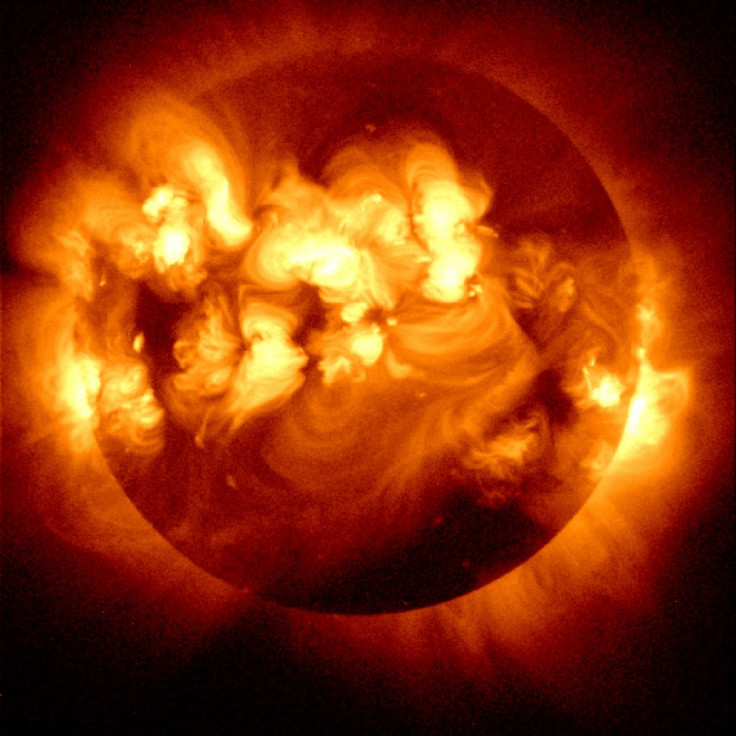Big Solar Flares may Produce Visble Auroras

The sun has unleashed a series of solar flares over the last four days, but the good news is none of them are expected to travel directly toward Earth.
All the flares erupted from the same sunspot, No. 1283. It started on Tuesday when an M-Class flare erupted, followed by another that came as a X2.1 class solar flare almost 4 times as strong as the first one.
The third flare erupted on Wednesday at 6:36 p.m. ET and was categorized as an X1.8 by the GOES spacecraft, making it the second X-class flare within 24 hours. The fourth flare from the same sunspot, detected by GOES at 11:36 a.m. ET Thursday, was an M6.7 flare, considered moderate.
The flares are classified according to how powerful they are, as A, B, C, M or X, with X being the most powerful.
The latest three flares were backed by coronal mass ejection, which is a cloud of hot charged particles that moves at high speed outward from the sun's surface, but none of them are expected to travel directly toward Earth, according to NASA.
The flares are seen first, as the light and radiation take only eight minutes to get to Earth. The CME moves slower and takes days, in the same way that thunder follows lightning.
NASA models suggest that the first two were unlikely to cause an aurora but the latest CME may give a glancing blow to Earth on Sunday morning, and might create some aurora.
Solar activity waxes and wanes over an 11-year sun weather cycle. With the sun transitioning to a busier cycle in 2013, scientists expect more solar activity over the next three to five years.
The largest recent solar flare was in December 2006, which measured X9 on the solar flare scale.
A solar flare is caused when intense burst of radiation comes from the release of magnetic energy associated with sunspots. Flares are the solar system's largest explosive events. A CME happens when the outer solar magnetic fields are closed, often above sunspot groups, and the confined solar atmosphere can suddenly and violently release bubbles of gas and magnetic fields.
While a strong solar flare increases the chance of a spectacular light show, the electromagnetic pulse can also disrupt satellite communications, power grids and radio traffic when it passes the Earth. Some industries that are usually affected by solar flares include electrical power grid companies, airlines, GPS, military and ocean shipping routes.
The strongest solar storm on record is called the “Carrington Event,” named after Richard Carrington, who viewed and reported on the solar flare in late August and early September,1859. From Aug. 28 through Sept. 4, aurorae of unusual brilliance were observed throughout the globe.
© Copyright IBTimes 2024. All rights reserved.











